Transistors, How do they work ?
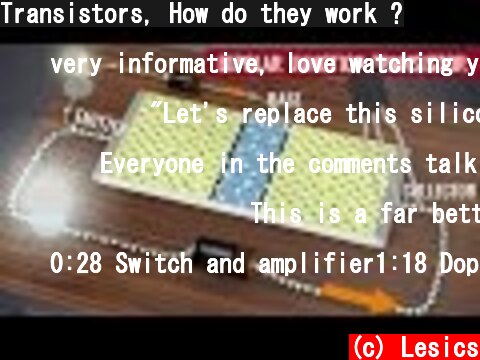
(c) Lesics Dear friends, Please support us at Patreon, so that we can continue our free educational service …
very informative, love watching your videos!
“Let’s replace this silicon atom with a four-handed smiley.”Let’s not
Everyone in the comments talking about smiley silicon atomTake a moment to appreciate this man❤️what an explanation 👍
This is a far better tutorial than the ones delivered in an engineering class lecture
0:28 Switch and amplifier1:18 Doping4:37 Forward biased diode to break the potential barrier or depletion region(Switch)5:20 As an amplifier
I love that you turned those atoms into smileys. I used to be the girl who would draw everything as characters (electrons, protons, neutrons, different kinds of radiation, ph indicators, substances etc.) and it helped me to memember things better (and made learning more fun!).
such a good and simplified explanation of the transistor’s working principle, thank you so much !!!
Great explanation with perfect visuals! I actually didn’t want the video to end, it’s so engaging! Finally got my concepts cleared. Thanks!
This is *exactly* the type of learning I was looking for, thank you for this video!
Great vid. This channel never fails to explain engineering easily.
Congrats! I am a physicist and I can to say that your explanation is very useful and understandable for a complex topic
Best and most clear explanation of Transistors I’ve seen. Thank you!
It’s really deep.. I have enjoyed this cls. Literally I didn’t get this much of clarity from any lecture notes. Thanx a lot guys♥️
I’ve been in electronics for over 30 years. This is one of the best pictorial tutorials I’ve ever seen. Good Job. Best Wishes n Blessings. Keith Noneya
The best video I’ve ever seen. If more these kinds of videos are available for Physics, students like will never get bored of this subject. 😭😭💯💯 Thank you so much for making this video and keep going like this.🔥🔥❤️❤️🙏🙏
Really educational, though I wonder;Can you control the flow of power by making the base power variable?Or does it only have a distinct on or off state?
Thank you Sir, you are the only one who got the skill, the talent to make me understand with your diagram, what a transistor really is. I’m a beginner, and for three days I have been watch about a transistor on youtube and what I notice after was that their explainations doesn’t even tickle my brain! Thank you very much again. Ty
This still baffles me after years of being an electronics engineer. I want a quantum explanation of PN junctions.
– “Let’s replace this silicon atom with a four-handed smiley.”*screams*
Thank you really much! it’s was incredibly good explanation. Today, My class covered this concept. but it wasn’t clear for me. I liked that you came up with idea of smiling silicon which had four hands. How do create such beautiful animated helpful videos?
Understanding Limited Slip Differential
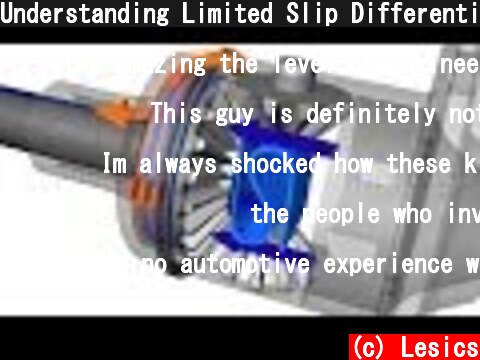
(c) Lesics Help us to make future videos for you. Make LE’s efforts sustainable. Please support us at Patreon.com …
It’s amazing the level of engineering that most people who drive will never see. The emphasis is always focused on the engine, but its gears that ultimately make the car move. The precision needed for these things is beautiful
This guy is definitely not a fan of the word “the”But its a clear, concise video, and very well done.
Im always shocked how these kind of friction pads can actually be used in real life applications. I would always guess that any friction material would burn out or wear out within days. Impressive materials and engineering
the people who invented these things, are great people i admire those engineers.
I have no automotive experience whatsoever but the animations make it pretty easy to understand. Limited slip means just that: slippage between plates is just enough to allow rotational velocity difference between the side gears. Thanks!
Just… insane that people could figure this out….
A great mind is needed to combine a few simple mechanisms into one brilliant construction. I love how one rules of physics are used to counter the others to make a functional, safe system.
Always add the friction modifier when changing the diff. fluid. These units are EXPENSIVE!
Thanks for the video sir! First time to know about LSD. I’m driving a trooper 94 model and also first time to experience a trouble in my 40 years of driving. During maneuvers one rear wheel seems refuse to roll and the car hardly moves forward. Thank for an advice.
Good video. I never really thought about how a limited slip actually worked. The more you know!
This LSD is trippy stuff!
You are a true passionate lover of engineering when you see the elements in a differential as your own children, calling them by their names “thus Clutch Pack at High Traction Wheel side will be pressed firmly, and Clutch Pack will be locked”.
Thanks for this great video. LSD is just one of those things that doesn’t get enough attention as a modern automotive unit. I’ve been figuring out how to set lsd on gran turismo which lead me here…
Все не мог понять за счёт чего диски начинают сжиматься, но только тут нашёл обьяснение. Авторы – моё вам уважение!
Thank you Sir for such a nice explanation of advanced techniques.
Awesome animations and explanation !I was planning on taking a look at my rear end and possibly swapping my gear back to stock but seeing this video now I’m sure this is something I’ll leave to Corvette Doctors to swap as this will require much experience.Those short 3.90 gears on my Chevy make my odometer log in fake and inflated mileage for over 54k miles….
I love this stuff. Amazing brains to figure out these competing forces.
its crazy that under hi stress situations the side gears move out ,changing the amount of meshing to actuate the lockers ,you think it would slip and grind out
A great, descriptive video though the dominating physics in the clutch pack when the two wheels are engaged with surfaces of vastly different resistance starts with the rotational frequency of the slipping wheel building angular momentum in the bevel gears to impart axial force from the bevel gear (or parallel to the plane of rotational symmetry of the side gear) to the spring toward the opposite wheel, causing the clutch pack on that side to lock. Your description is also correct and explains why the clutch pack can lock (due to reduced momentum and forces on that side) though does not explain where the actual axial force comes from. I really like the video though, well done!
I just got a 9th gen Si and it’s my first time having LSD ! And it feels great to not be spinning a lot like the problem I had on my old 6th gen that didn’t have LSD
Torsen Differential, How it works ?
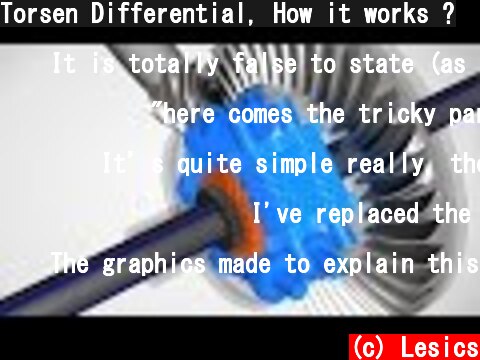
(c) Lesics Help us to make future videos for you. Make LE’s efforts sustainable. Please support us at Patreon.com …
It is totally false to state (as this video does) that a Torsen diff will “lock” when one side has traction and the other does not. This has caused much confusion. As many of the commenters who actually have Torsen (also known as torque biasing) diffs have confirmed, it still acts like an open diff when the traction on the low traction side approaches zero. A Torsen diff *never* locks. The angle of the teeth on the worm gear and wheel establish a torque multiplier (torque bias ratio) greater than 1. In a conventional open diff, the multiplier is 1 (torque bias ratio of 1:1). This means the high traction side always gets exactly the same amount of torque as the low traction side. When traction on one side drops to zero, it takes effectively zero torque to spin that tire, so the open diff sends zero torque to to the high traction side, and you go nowhere. A Torsen diff may have, for example, a TBR of 3 to 1. In a low (but not zero) traction situation, the higher traction side gets 3 times the torque of the low traction side. If it takes 200 N*m to break loose the tire on the low traction side, the Torsen will send 600 N*m to the high traction side, giving you a total of 800 N*m to the ground. But being a multiplier, if the low traction side takes close to zero torque to induce wheelspin, then the high traction side gets 3 time 0 = 0, and you still go nowhere, just like an open diff. The above is the primary reason why Torsen differentials are not used for all applications. They are *not* noisy (as was claimed by +Learn Engineering), but they are non-adjustable (can’t change torque bias ratio on the fly), can’t disengage when used in the center to reduce drivetrain losses and they never actually lock at all, making them mostly unusable for extreme offroad use.The original Hummer uses Torsen diffs because they’re mechanically strong and zero maintenance and the vehicle was designed for desert and other off highway usage, while keeping all four tires on the ground, not rock crawling (where you may loft a tire off the ground). When you do loft a single tire off the ground on the Hummer, it can get stuck. The trick is, while continuing to apply power, to lightly apply the brakes which increases the load on the previously zero traction side of the diff, and the Torsen diff then multiplies the torque required to overcome that braking force by its torque biasing ratio to give you more torque to the high traction side as explained above. This same trick works a little bit with an open diff. Any Audi quattro made in the last 15-20 years or so does the same trick electronically by selectively applying the ABS brakes only to the spinning tire on the zero traction side and Torsen then sends that torque times the TBR ratio to the high traction side. It’s quite effective. On a side note. Understanding torque transfer can be extremely confusing. For instance, it is quite common to state that when a locking diff is locked, that it has a 50/50 torque split, but that is not true. An open diff has a 50/50 torque split, 100% of the time. A locked diff, where one side has no load (zero traction) and the other side has traction, now has a 100/0 torque split. 100% of the available torque goes to the high traction side, and virtually nothing to the zero traction side, despite the fact that both sides of the diff are rotating at the same speed. Relative rotation rates have almost nothing to do with applied torque.
“here comes the tricky part”��� I was struggling long before we got to that point lol
It’s quite simple really, the engine applies torque to the input; *’witchcraft happens’*, and the wheels turn. See very simple.
I’ve replaced the planetary differential with a Torsen differential in my classic 1/8th scale buggy. It improved the handling a lot.
The graphics made to explain this are amazing, something like this would be impossible to explain otherwise. Great Work!
They work great. Had them installed 30 years ago in a truck. You could have one tire in the air and the one on the ground would still pull you. Both tires will turn about the same speed and one won’t spin wildly. In turns on ice and snow you could still steer unlike a locker or most posi’s. An outside force (road) can cause the wheels to differentiate.
I’ve installed an aftermarket (quaife) one on my sports car and it greatly enhanced the driving experience. You can put more power through corners, when you reach the limit the rear starts to slip gradually but the limit is higher. Before it would not do anything then snap suddenly because it would spin the inner wheel with the other not spinning then it would suddenly spin the other wheel if pushed further.
I love the animation! I learn by images and this really helps!
That is the best explanation I’ve seen so far in the last 20 years. I would recommend this video to anyone who did not fully understand the locking or the correspondence of the worm wheels with the worm gears.
I like the Torsen Type Limited Slip Differential over the Clutch type. Torsen does not rely on lateral thrust and has no clutches to wear out. The use of worm and spur gears and which way intermixed gear rotations are allowed is pure genius. Great videos! Thanks!
Thanks for the video, it is really a good visual illustration of how this differential system works.I guess this is a speed sensing approach, where the tendency of a slipping wheel is sensed by the worm wheel pairs, and thus locks the differential action, allowing the wheel with better traction to use its potential, while the slipping wheel continues to spin.The name suggest TORque SENsing, and so how does this differential sense the change in transferable torque(or traction potential) �and then accordingly divert torque to the wheel with better traction?Also, in your upcoming video, could you please add, load(torque) dependent Torsen differentials, where the worm wheels slide on their axes as the input torque increases.
Nice explanation, thank you.How well would it interface with a flux capacitor?
So cool! I’d been baffled by these things for a while, this explains it really well. Granted I have most of an engineering degree by now, one year left. Makes me really want one for my old Slugbug – they are available, direct replacement for stock open diff. Just hella expensive. With enough money there are very few things you can’t do on an old Bug.
Good explanation. I understood the principal of operation long ago, however this graphic helps put it all in perspective as this video shows the theory in action. Thank you for the visual simulation. John, Australia.
Amazing video. This is the only video on youtube which explains torsen so effectively. I would like to know which CAD software do you use for this gear animations?
Thanks for these. �I was wondering just what the heck a Torsen differential was and how it differed from other LSD’s. �This (and the other video) were just the right depth of explanation. �I had been wondering about some odd sensations from the back end while driving and this certainly explains them. �Now it’s suggesting your brushless motor vid–I think you’ve got a new subscriber.
What this explanation leaves out, or simply states as the law of the worm gear set, is that the inherent friction of�the worm/worm wheel interface, coupled with the trigonometry of the tooth interface�results in the gear set locking when the worm wheel tries to drive the worm. When the friction coefficient is greater than the tangent of the angle the interface won’t slide. Just like the ladder on the wall problem from high school physics. As long� as the worm is driving,�this friction is just an inefficiency. So the torque bias is related to the ratio and related helix angle of the gears.
This is a simple explanation of how this works. From watching this I can see why companies use these.
Truly genius. I always was mechanically inclined, but gears (and rope knots) was something I still can’t comprehend fully.Although this doesn’t lock the wheels completely in a zero traction situation.The simplicity and robustness is truly amazing.
Great video! Thanks for this excellent refresh on what people should know about their cars. I live in Canada because of our rugged weather, I sincerely think that all car should come with a limited slip differential either for front wheel drive or rear wheel drive cars. Open diff or traction control is for moderate weather and it is inadequate for what we have here. I think car companies should make the effort standardize limited slip differential on all models coming to Canada. Keep up the great work!
DC Motor, How it works?
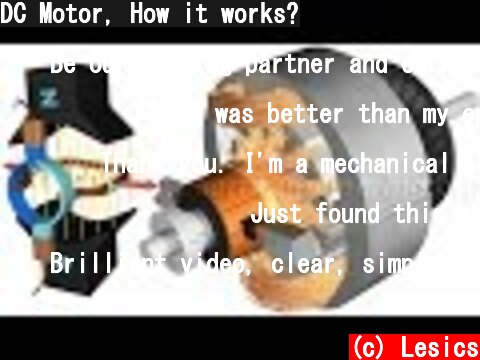
(c) Lesics Help us to make future videos for you. Make LE’s efforts sustainable. Please support us at Patreon.com …
Be our dubbing partner and earn a regular income !http://www.learnengineering.org/p/be-our-dubbing-partner.html
This was better than my entire circuits class!
Thank you. I’m a mechanical engineering student, I’m taking electric machinery course this semester and you made it a lot easier for me to understand the construction and starting of dc motors. Although it’s a too briefed description.
Just found this channel… Absolutely brilliant, been looking for this for ever! A combination of mechanical, electrical, civil…. Heaven! Thank you very much!
Brilliant video, clear, simple, covers all the basics for further learning, great work!
Thank you. Needed to read up on DC motors and it’s a lot harder to understand the construction of these when it’s all on paper. The step by step visual presentation made this a lot easier to digest.
Easy to understand and yet detailed enough visuals, a clear voice and the video length is perfect. Excellent video, thanks!
Great video mate, you speak very clearly so the entire world can understand.Very educative !
Better than my lecture in my power engineering course. Thank you!
Hi! Great video, just like all your other ones! I have a question about the armature of the rotor. You say that it has HIGH permeability to ease the magnetic flux interaction. Shouldn�t it be with LOW permeability so it will reduce the eddy current losses when the rotor turns inside the magnetic field of the poles?Hope i was clear with the question.Thanks.
Very useful and thanks for uploading it. Couldn’t understand it from my textbook. 1 doubt btw. According to Fleming’s left hand rule, the North Pole will apply force towards the south Pole, and the current, the magnetic field, and the motion are perpendicular to each other. So, the North Pole should apply force on the coil which is connected to the split rings. The motion should be opposite I guess.
this explanation was amazing…thnx a ton..simple..accurate…time saving
Thanks. I was wondering how electricity translated into movement! Now I know how it works
Simply superb. I have watched virtually all the videos that you have uploaded and they have helped me enormously. Looking forward to seeing new ones! Thank you so much
Well done! Clear explanations and animations that make it very easy to understand how DC motors work.
I’m in school now studying this and I want to thank you for this video; it is very concise and well articulated, and helped me wrap my head around the concepts. Can you direct me to resources that further explain the functions and results of motor/generator loading and perhaps the dynamics of series versus parallel versus differential/cumulative compound functions?I will recommend your videos to my classmates!
You guys are doing a great job, hats off to you guys!Quite helpful lecture.
To ensure steady uninterrupted rotation there must always be an even number of coil loops that form the DC motor’s armature.
Absolutely great video, thanks a lot. A small note for everyone: Something missed in the video, the armature coils don’t exert only back EMF, they exert magnetic field opposite to beneficial flux also. Because of this, at the big powered machines; some extra coils which called “commutation coils” and “compensation coils” being used to get rid of the armature flux.
Very good explanation, thanks. I finally understand the workings of a DC motor.
How do Airplanes fly ?

(c) Lesics Help us to make future videos for you. Make LE’s efforts sustainable. Please support us at Patreon.com …
Can you be our supporter today? https://www.patreon.com/LearnEngineering
I just find it crazy that planes even exist. Like how the hell did people figure it out, just blows my mind.
Watching this beautiful machines going to the sky inspires me. “When everything seems to be going against you, remember that the airplane takes off against the wind, not with it.”Safe flights
This was one of the most satisfying physics video I have ever seen..You have explained a tough topic in a very easy way by solid reasons and animation……
I think I’m ready to fly a plane
I once asked a pilot how planes fly. Dude threw a sheet of paper in the air and said ‘just like this’.. lol
very good video
Nobody:Literally nobody:Me after seeing this: flying a plane in my dream and saving people’s lives by using extraordinary aviation skills that I have learned from this video and many more.
Amazing
after learning from this simple and easy tutorial, even me can fly a fighter jet. Great Thanks !!
Hey thanks for the video it was incredibly amazing, but I have one question. Wouldn’t the thrust force be greater than drag force in order to make it move forward? Thanks again!!
This is an amazing video! Very nice animation makes it easier to understand how different parts of the wings etc act to control the motion of the aircraft.
This is amazing to me, the way that it works, amazing… Love airplanes<3
One of my Uber drivers was also a pilot and I felt so unworthy being in his vicinity. I respect pilots and planes a lot
awesome explanation being a mechanical engineer myself i tgroughly cherised it. never seen such a detailed clear and amazing elucidation . ☝
Extremely heart touching, awesome video n explanation, much informative, may God give eternal paradise to those who invented and upgraded the technologies of planes and all the automotives like cars n bikes too…made life soo comfortable…
great video, detailed explanation of navigation in air.Can you please explain how airplanes make sense of directions(where to go and when to turn) using GPS or earth’s magnetic field
This gets me more to become a Flight Engineer!
Nice and elaborative training clip! I really enjoyed and learn! Thanks!
Great ! I wish the ‘brake’ control was explained a little further. It was mixed with Rudder control and hence confusion remains. But thank you very much for a fantastic teaching video 🙂
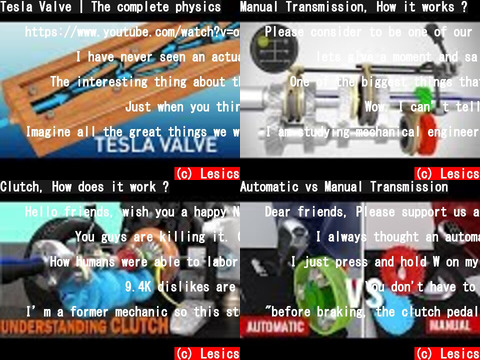









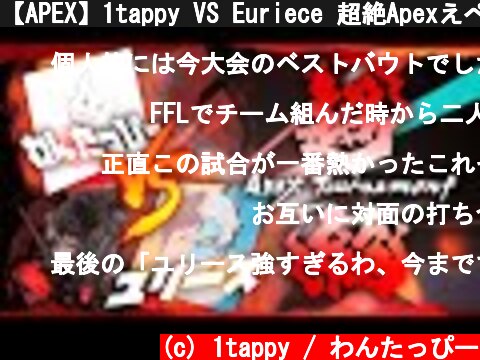
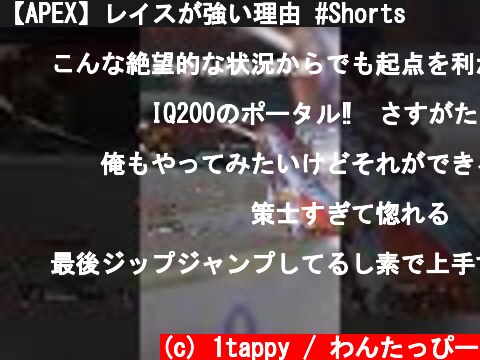


![岡田斗司夫 [切り抜き] 編集ちゃんねる(Youtube 動画 pick up)](https://imitoha.com/c/imgc/UCwfyW7i8kAFUj8_tSSDT_PA/-a-input.jpg)









コメント